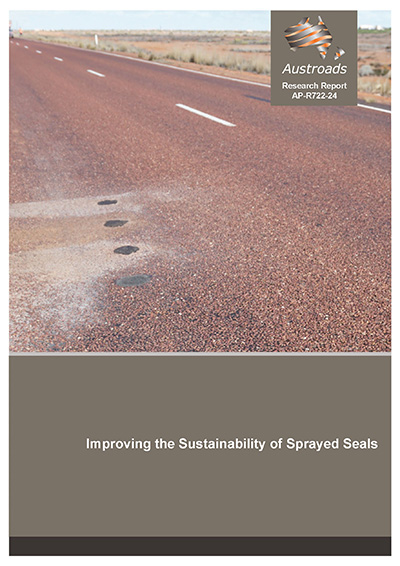Thursday, 19 December 2024

A new Austroads report outlines key strategies for reducing the environmental footprint of sprayed seals, a vital component of road infrastructure across Australia and New Zealand.
Sprayed seals cover about 70% of sealed roads in both countries and are also used in several other regions globally. However, their reliance on non-renewable resources, particularly crude oil-derived binders and quarry-sourced aggregates, raises concerns about their sustainability.
The report highlights that while sprayed seals are more environmentally friendly than asphalt and concrete surfaces due to their lower binder and aggregate requirements, there are still significant opportunities to reduce their environmental footprint. According to the findings, reducing the use of cutter oils and revising the selection of bituminous binders, especially for initial treatments, can yield substantial environmental benefits.
“Sprayed seals are an essential part of our road network, but like many industries, we need to adapt and evolve to address climate change and sustainability challenges,” said Ross Guppy, Austroads Transport Infrastructure Program Manager. “Our report outlines practical solutions that can reduce emissions and resource use, ensuring that these road treatments continue to play an important role in Australia and New Zealand’s infrastructure.”
The report identifies emerging technologies, practices, and materials that aim to reduce the environmental impact of sprayed seals. This includes innovative alternatives to traditional bitumen binders – such as emulsions, bio-binders, and additives – as well as advancements in aggregates, precoating methods, and construction equipment.
The research also examines ways to extend the lifespan of sprayed seals and the impact of climate change, as warmer temperatures and changing weather patterns could affect seal longevity and performance. A key part of the report is an environmental life cycle analysis, which compares the sustainability of different road surfacing methods, highlighting approaches that can minimise emissions and resource use.
“The findings presented in this report underscore the potential for significant sustainability gains in the road surfacing sector. With detailed analysis and clear recommendations, the report provides the roadmap for industry stakeholders to make more informed decisions moving forward,” Ross said.
"Collaboration between road agencies, contractors, and researchers is crucial for advancing sustainable road construction. This report emphasises the importance of collective efforts to identify and implement practical solutions that balance the need for infrastructure with environmental responsibility,” he added.
Download: Improving the Sustainability of Sprayed Seals
A webinar about this Report was held on Thursday 19 December. Watch the presentation by author Steve Patrick and a Q&A moderated by project manager Robert Busuttil to learn more about the report's key findings.
